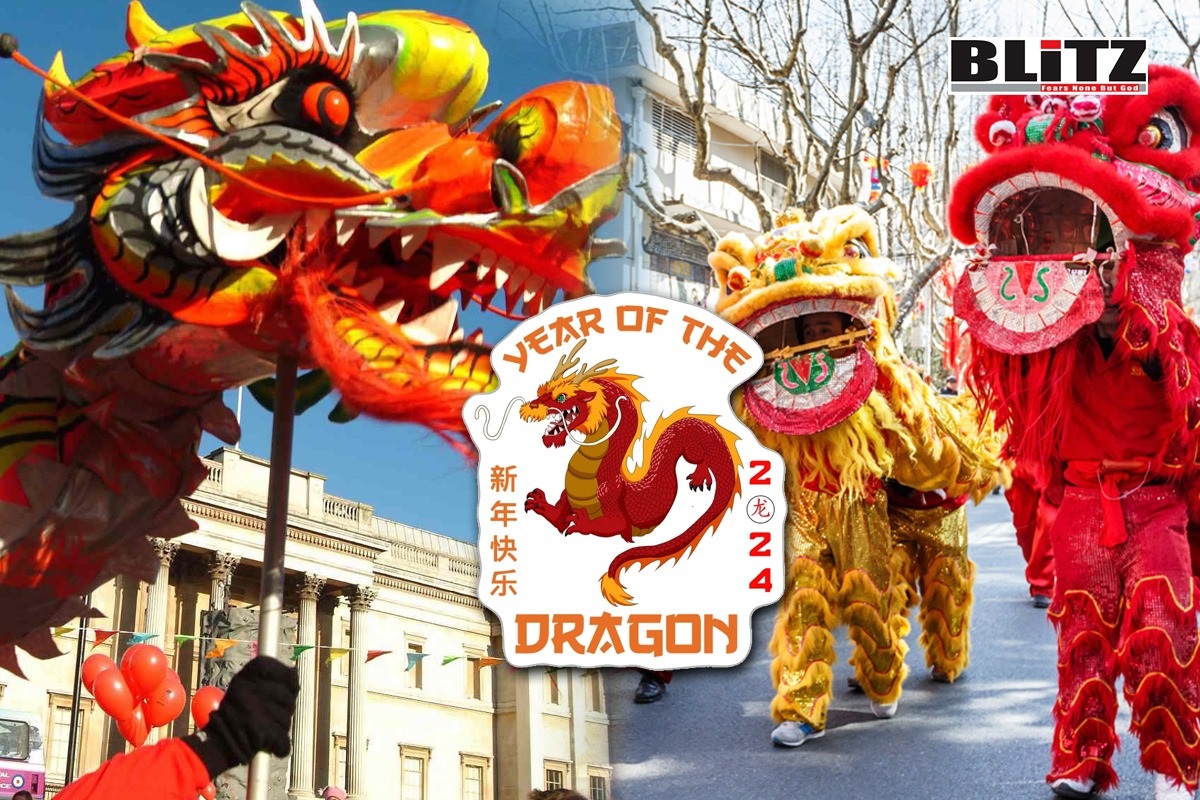How China is preparing for celebrating the Year of the Dragon?
- Update Time : Monday, February 5, 2024

As the lunar calendar approaches the much-anticipated Year of the Dragon, China is gearing up for a grand celebration that reflects both tradition and modernity. The Year of the Dragon is considered especially auspicious, associated with good fortune, intelligence, and strength, making it a time of joyous festivities and cultural significance.
In the weeks leading up to the Lunar New Year, which falls on the 21st of January this year, Chinese households engage in thorough preparations. Cleaning and decorating homes signify the removal of bad luck and the ushering in of good fortune. Red lanterns, traditional couplets (known as Chunlian), and intricate paper cuttings adorn streets and homes, creating a vibrant and festive atmosphere.
Food plays a central role in Chinese New Year celebrations, and each year corresponds to a specific zodiac animal. In the Year of the Dragon, dishes symbolic of good luck and prosperity take center stage. Dumplings, symbolizing wealth and longevity, and the traditional Nian Gao (glutinous rice cake), signifying advancement and the promise of a better year, are integral to the culinary festivities.
Elaborate dragon parades and performances are a hallmark of Chinese New Year celebrations. In various cities across China, dragon dance troupes mesmerize onlookers with their intricate, choreographed movements. The dragon, a symbol of power and strength, weaves through streets, accompanied by the rhythmic beats of drums and cymbals. These performances not only entertain but also bring communities together in a shared cultural experience.
While traditional customs are cherished, China also embraces modern ways of celebrating the Lunar New Year. In recent years, technological advancements have brought innovative elements to the festivities. Virtual red envelopes, known as Hongbao, are exchanged through popular messaging apps, incorporating the ancient tradition of gifting money for good luck into the digital age.
The Spring Festival travel rush, also known as Chunyun, is an integral part of the Chinese New Year experience. It is considered the world’s largest annual migration, as people journey to be with their families for the celebrations. Family reunions are a cherished aspect of the festival, emphasizing the importance of togetherness and harmony during this auspicious time.
Chinese communities around the world join in the festivities, ensuring that the spirit of the Lunar New Year reaches far beyond China’s borders. Chinatowns in major cities come alive with cultural events, dragon parades, and vibrant displays, showcasing the richness of Chinese traditions.
To mark the Year of the Dragon, a plethora of themed merchandise floods the market. From dragon-themed decorations to special edition products, businesses capitalize on the zodiac symbol to engage consumers in the festive spirit. Traditional Chinese arts and crafts also see a surge in popularity during this time.
Why Lunar New Year is important to the people of China?
The Lunar New Year, also known as the Spring Festival or Chinese New Year, holds immense cultural, historical, and familial significance for the people of China. Here are several reasons why Lunar New Year is profoundly important to the Chinese:
The Lunar New Year is deeply rooted in Chinese culture, dating back over 4,000 years. It is a time-honored tradition that has been passed down through generations, encompassing a rich tapestry of customs, rituals, and symbols.
One of the most significant aspects of the Lunar New Year is the emphasis on family reunions. Millions of Chinese people travel across the country to be with their families during this time, regardless of the distances involved. The importance of family unity and harmony is highlighted, and the reunion dinner on New Year’s Eve is a symbol of togetherness.
Each year in the Chinese zodiac is associated with an animal, and the symbolism of these animals carries deep cultural significance. The Lunar New Year represents a fresh start, and people believe that the characteristics of the zodiac animal for the year influence the events and fortunes of that year. The Year of the Dragon, for example, is considered particularly auspicious, symbolizing power, intelligence, and good fortune.
Traditionally, the Lunar New Year is believed to be a time when evil spirits roam freely. The vibrant red decorations, firecrackers, and the act of giving and receiving red envelopes (Hongbao) filled with money are all customs aimed at warding off evil spirits and bringing good luck and prosperity.
The Lunar New Year is marked by lively and colorful celebrations that span over a period of 15 days, with the peak being on New Year’s Eve. Dragon and lion dances, firework displays, temple fairs, and parades fill the streets with energy and joy. The festive atmosphere is contagious, fostering a sense of community and shared cultural identity.
Food plays a central role in Chinese culture, and the Lunar New Year is no exception. Families prepare and share special dishes that carry symbolic meaning. For example, dumplings symbolize wealth and prosperity, while fish represents abundance and surplus. These foods are chosen not just for their taste but for the positive associations they bring.
The Lunar New Year is a time for reflection on the past and making resolutions for the future. People take stock of their achievements, express gratitude for the blessings of the previous year, and set intentions for personal and familial growth in the coming year.
The Lunar New Year triggers the largest annual human migration, known as Chunyun, as people travel to be with their families. This massive movement has significant economic and social implications, influencing travel, business, and cultural exchange. The holiday is a vital time for retail, with gift-giving and shopping contributing to a surge in economic activity.
The Lunar New Year is a multifaceted celebration that encapsulates the essence of Chinese culture, emphasizing family, tradition, and the pursuit of prosperity and happiness. It is a time when the past is honored, the present is celebrated, and the future is embraced with optimism and hope.
The approaching Year of the Dragon is met with excitement and reverence across China. The fusion of traditional customs with modern celebrations reflects the dynamism of Chinese culture. As the dragon takes its revered place in the zodiac cycle, the people of China prepare to welcome a year brimming with optimism, joy, and the promise of good fortune.
恭喜发财. 身体健康. 事业发达.
















